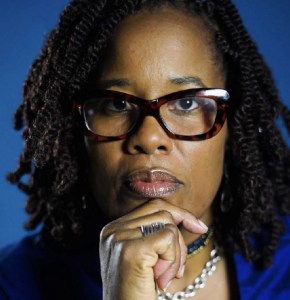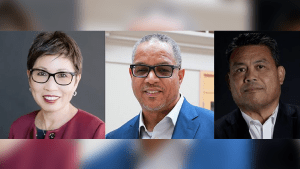
By Dr. Kaye Whitehead
There is a place between who we want to be and who we are. It is a difficult, sobering place because it forces you to look at what you have done and then challenges you to do better. This is that moment, and unfortunately, we have been here before. The end of the proclaimed Black History Month is that moment. America should have spent that last month deep diving into our history, our struggles, our stories. We should have been doing the same. This is the moment to scream that Black Lives Matter, even if what we see around us are constant reminders that they do not. We live in our country where Black bodies have always been valued even though they told us that Black lives did not matter. What we know to be true and what we should be teaching our children is that our History is THE History. It is through our tears, our sweat, our blood, our sacrifice, our struggle, our faith, our love, our laughter, our music, and our humanity that you can trace the American Story. Langston Hughes, in his poem, “Let America Be America Again,” wrote:
“I am the poor White, fooled and pushed apart,
I am the Negro bearing slavery’s scars.
I am the red man driven from the land,
I am the immigrant clutching the hope I seek,
O, yes,
I say it plain,
America never was America to me,
And yet I swear this oath
America will be!”
His vision of and for America is my vision as well. No matter how long it takes or what needs to be sacrificed along the way, America will be America for us. This is the moment, and like Angela Davis once said, we must “sink deep into the moment, husbanding this delight, hoarding it” because it will be short-lived. And even though we know how many of us have died for this American dream, we must walk into this moment confident and unafraid because somewhere buried deep in our genes is the familiarity of freedom. We know what it feels like, even though we are not experiencing it right now. We are the descendants of those who chose to survive.
In August 1619, when the first “20 and odd Negroes” arrived in Jamestown, VA, they did not know what their future held, but they did know their past. They remembered freedom and family; they remembered being loved and being valued. They remembered that their lives and their survival, and their sanity mattered. They understood that they were not the embodiment of evil and violence in this story; they were heroes or sheroes. They were not the footnote to the beginning of America’s story; they were the story. They were the dawn of a new day. They were the hope and the dreams of their parents. They were survivors, and even if their story was not going to be written, it was going to survive. Their story showed up in my great-grandmother’s eyes and my Nana’s hands. It showed up in the laughter of my sons and in their quiet moments of resistance. They understood their worth and their value. Black bodies have always been valued in this country.
It was during this period, that the notions of race and slavery, as explained by historian Ira Berlin, were constantly being reevaluated. America moved from being a “nation with slaves” (where slavery was one of the economic pillars of the economy) to a “slave nation” (where slavery was the center of the economy). Our nation was built by Black hands on the backs of Black people and is being held together by the heart and the soul of our collective Black humanity. It was built on the compromises that White men made about slavery which was essentially about the worth and value of our people. According to economist Robert Evans, the slave market for the antebellum South was similar to the New York Stock Exchange because it “served in the eyes of the public as a sensitive reflector of current and future business prospects.” So the market itself was driven by the cost and value of Black bodies. In 1860, an enslaved man, in good health and condition, was worth about $1,500, and an enslaved woman (essentially an enslaved girl of childbearing age) was worth about $1,325. Now to do the math for a moment: $1 in 1860 is worth $33.87 today, so an enslaved man, using today’s money market, was worth about $50,805, and an enslaved woman, $44,877. Black bodies have always been valued even though we are told that our Black lives do not matter while showing us that our Black dollars do.
In 2019, according to the Selig Center for Economic Growth, Black buying power was $1.4 trillion, which is higher than the gross domestic product of Mexico. It is projected to grow to $1.8 trillion by 2024. At the same time, we have the lowest rates in homeownership, life insurance, college savings plans, and retirement accounts. We are outpaced in our wages by our White and Asian counterparts with the same skills and experience. Black history month, which is supposed to be a time of reflection for what we have been through and pride for what we have overcome, has been transformed into a capitalist hodgepodge of “I have a dream mattress sale,” and we shall overcome designer tennis shoes. It is designed to confuse us instead of giving us the clarity that we need to understand that we are descendants of survivors, and we are because they were. So as we move out of this month, let us do so knowing and proclaiming that Black history is American history and that without our story, there is no story to tell.
Karsonya Wise Whitehead (todaywithdrkaye@gmail.com; Twitter: @kayewhitehead) is the Founding Executive Director of The Karson Institute for Race, Peace, & Social Justice at Loyola University, Maryland and the 2021 Edward R. Murrow Regional Award-winning radio host of “Today With Dr. Kaye” on WEAA 88.9 FM. She lives in Baltimore City with her husband and their dog, BellaReds.
The opinions on this page are those of the writers and not necessarily those of the AFRO. Send letters to The Afro-American • 145 W. Ostend Street Ste 600, Office #536, Baltimore, MD 21230 or fax to 1-877-570-9297 or e-mail to editor@afro.com
Help us Continue to tell OUR Story and join the AFRO family as a member – subscribers are now members! Join here!
The post Black bodies have always mattered appeared first on AFRO American Newspapers .










